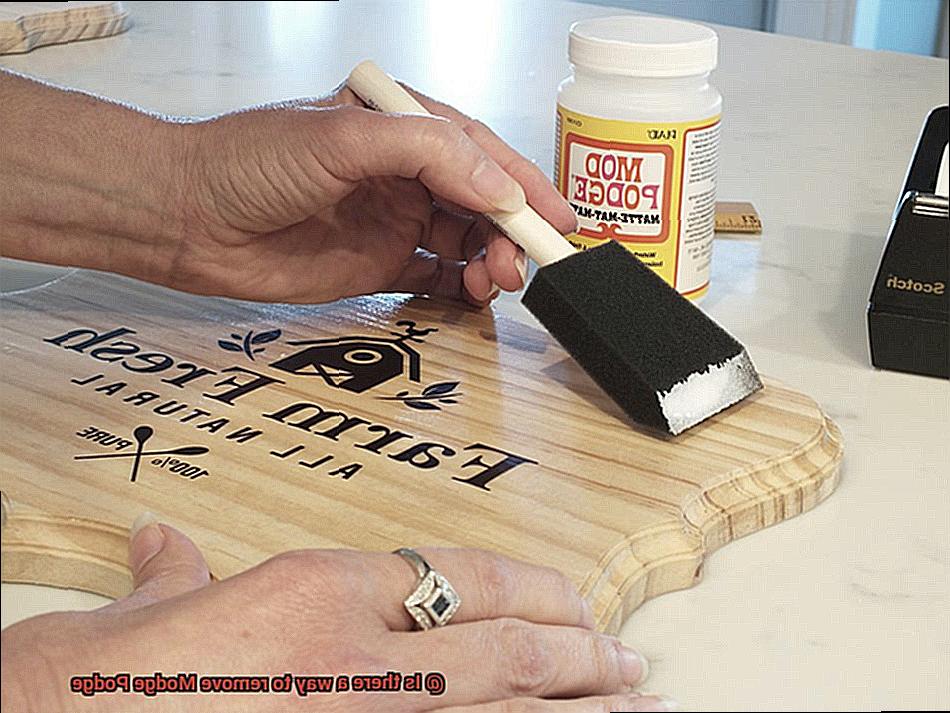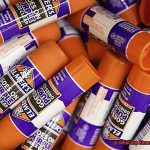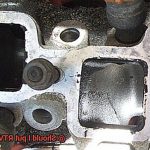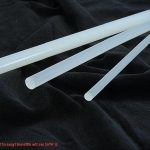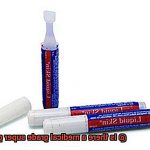We’ve all been there, my fellow craft lovers. That moment when your masterpiece is complete, but a stubborn layer of sticky Modge Podge remains, taunting you with its refusal to budge. But fear not. Today, we’re on a mission to crack the code and reveal the secret to removing this enchanting yet clingy decoupage medium.
Modge Podge, the sorcerer’s tool that can turn everyday objects into mesmerizing works of art, has undoubtedly cast its spell on DIYers everywhere. However, when it’s time to undo your creation or fix a mishap, many find themselves pondering if there’s a way to banish Modge Podge without leaving a trace.
Join us in this captivating exploration as we dive headfirst into the realm of Modge Podge removal. We’ll unravel the techniques that truly work, from everyday household items to tried-and-true methods that have stood the test of time. Together, we’ll unlock the secrets to safely and effectively undoing Modge Podge’s hold on your surfaces, leaving them pristine for your next creative endeavor.
So roll up your sleeves and grab your trusty craft remover tools because it’s time to embark on an enchanting journey. Together, we’ll discover the magical spells that will banish Modge Podge and unleash your creative freedom once more.
Warm Water and Soap Method: An Easy Way to Remove Modge Podge
Contents
- 1 Warm Water and Soap Method: An Easy Way to Remove Modge Podge
- 2 Vinegar Solution: A Natural Remedy for Removing Modge Podge
- 3 Rubbing Alcohol Technique: Dissolving the Adhesive with Solvent
- 4 Heat Gun or Hair Dryer Method: Softening the Modge Podge for Easier Removal
- 5 Commercial Adhesive Removers: Using Specialized Products to Remove Modge Podge
- 6 Tips for Safely Removing Modge Podge from Different Surfaces
- 7 Common Mistakes to Avoid When Removing Modge Podge
- 8 DIY Solutions for Removing Modge Podge
Modge Podge is a versatile crafting adhesive that can create beautiful finishes on various surfaces. However, the challenge lies in removing it once the project is complete. Fortunately, the warm water and soap method provides a simple and effective solution. This article will guide you through the step-by-step process of using this method, emphasizing its benefits and detailing how to prepare the warm water mixture, apply it to the Modge Podge, and estimate the time required for removal.

Step-by-Step Guide:
Gather your materials:
- Warm water
- Dish soap
- Soft cloth or sponge
- Bowl or basin
Create a soapy solution:
- Fill the bowl or basin with warm water.
- Add a few drops of dish soap.
- Mix gently to create a soapy solution.
Prepare the cloth or sponge:
- Dip the cloth or sponge into the soapy solution.
- Wring out any excess liquid.
Apply the soapy cloth or sponge:
- Begin by gently rubbing the soapy cloth or sponge in circular motions on the Modge Podge-covered surface.
- The warm water and soap will gradually break down the adhesive, making it easier to remove.
Continue rubbing:
- Persistently rub the affected area until the Modge Podge starts to loosen and lift off the surface.
- For stubborn areas, employ a soft-bristled brush to gently scrub.

Rinse and dry:

- Once all traces of Modge Podge have been removed, rinse the surface with clean water to eliminate any lingering soap residue.
- Dry the surface thoroughly with a clean towel or allow it to air dry.
Benefits of the Warm Water and Soap Method:

- Non-toxic: This method utilizes common household items, eliminating the need for harsh chemicals and ensuring its safety for most materials and surfaces.
- Easy and accessible: Warm water and soap are readily available, making this method convenient and cost-effective.
- Gentle on surfaces: The warm water and soap solution is gentle enough to be used on delicate surfaces such as glass or plastic without causing damage.
- Versatile: The warm water and soap method effectively removes both water-based and oil-based Modge Podge, making it suitable for various projects.
Vinegar Solution: A Natural Remedy for Removing Modge Podge
Are you tired of battling with that stubborn Modge Podge residue? Look no further, because I have the ultimate natural remedy for you – vinegar. Yes, that’s right, this trusty household staple can work wonders in removing Modge Podge.
Let’s dive into the nitty-gritty details. Vinegar is known for its acidic properties, making it the perfect candidate for breaking down the adhesive nature of Modge Podge. To get started, you’ll need some white vinegar and a clean cloth or sponge. Dampen the cloth or sponge with vinegar and gently rub it onto the Modge Podge-covered area. Apply light pressure and make small circular motions to really work that vinegar into the dried adhesive.
Now, here comes the magic – let the vinegar penetrate the Modge Podge for a few minutes. This will help loosen the adhesive properties and make it a breeze to remove. After a few minutes, grab another clean cloth or sponge soaked in warm water and wipe away the Modge Podge and vinegar mixture. If needed, repeat this process until every last bit of Modge Podge is gone.
But wait, we’re not done yet. After successfully removing the Modge Podge, rinse the surface with warm water to eliminate any leftover vinegar residue. Then, dry it thoroughly with a clean towel.
Remember, it’s always wise to test vinegar on a small, inconspicuous area first to make sure it won’t cause any damage. And if you’re dealing with delicate or sensitive surfaces, it’s best to consult the manufacturer’s instructions or seek professional advice.
Rubbing Alcohol Technique: Dissolving the Adhesive with Solvent
Well, worry no more. I’m here to share an incredible technique using rubbing alcohol to effortlessly dissolve that adhesive mess. Get ready to bid farewell to headaches and say hello to smooth, clean surfaces.
Let’s start by understanding what rubbing alcohol is. This clear liquid, also known as isopropyl alcohol, is commonly used as a disinfectant and antiseptic. However, it’s also an excellent solvent for removing adhesive.
Now, let’s get down to business. Here’s how you can use rubbing alcohol to dissolve Modge Podge adhesive:
- Step 1: Gather your supplies. You’ll need a bottle of rubbing alcohol with a concentration of at least 70%. This higher concentration ensures maximum effectiveness. Grab some cotton balls or a soft cloth too.
- Step 2: Test it out. Before applying rubbing alcohol to the entire surface, test it on a small, inconspicuous area first. Ensure it doesn’t cause any damage or discoloration.
- Step 3: Get soaked. Dampen a cotton ball or cloth with the rubbing alcohol. It should be saturated but not dripping.
- Step 4: Rub it in. Gently dab or rub the adhesive-covered surface with the soaked cotton ball or cloth. Apply pressure and repeat until the Modge Podge dissolves.
- Step 5: Safety first. Work in a well-ventilated area as rubbing alcohol fumes can be strong. Wear gloves to protect your hands from drying effects.
- Step 6: Rinse and dry. After dissolving the adhesive, rinse with warm water and mild soap. Gently scrub away any remaining residue with a sponge or cloth. Pat dry with a clean towel.
Your crafting project is now free from that pesky Modge Podge residue. No more sticky interruptions.
Remember, this technique is highly effective, but caution is key. Test rubbing alcohol on a small area and be careful with delicate surfaces. Work in a well-ventilated area and protect your hands with gloves.

Heat Gun or Hair Dryer Method: Softening the Modge Podge for Easier Removal
In this article, we’ll delve into the heat gun or hair dryer method, a powerful technique for softening Modge Podge and making its removal a breeze.
The Power Duo: Heat Gun vs. Hair Dryer:
When it comes to softening Modge Podge, both heat guns and hair dryers can get the job done, but they have some key differences. A heat gun is a mighty tool with adjustable temperature settings, perfect for tackling larger and more stubborn Modge Podge layers. On the other hand, a hair dryer is a user-friendly option, generating heat at a lower temperature and ideal for delicate projects.
Step-by-Step Guide:
- Prepare your work area: Find a well-ventilated space and safeguard your surface with a covering or disposable material.
- Gather your tools: You’ll need a heat gun or hair dryer, a scraper or putty knife, and possibly rubbing alcohol or adhesive remover for any leftover residue.
- Set up your heat gun or hair dryer: Plug in your tool and set it to the lowest heat setting. Maintain a distance of about 6 to 8 inches between the tool and the Modge Podge surface.
- Apply heat: Keep the tool in constant motion to prevent scorching or burning. As you apply heat, you’ll notice the Modge Podge becoming softer and more malleable.
- Remove the adhesive: Once the Modge Podge has softened, gently lift and remove it using a scraper or putty knife. Start at one edge and work your way across, applying light pressure to avoid surface damage.
- Tackle stubborn areas: If you encounter any stubborn spots, reapply heat or use a small amount of rubbing alcohol or adhesive remover to help loosen the adhesive.
Safety First:
Throughout the process, prioritize safety by avoiding direct contact with the heated surface and keeping your hands and fingers away from the hot air stream. Always follow the manufacturer’s instructions for your specific heat gun or hair dryer model.
Commercial Adhesive Removers: Using Specialized Products to Remove Modge Podge
Fear not, because I am about to reveal a secret weapon that will come to your rescue – commercial adhesive removers. These specialized products are designed specifically to tackle even the most stubborn adhesives, including Modge Podge. So let’s dive in and discover how these magical concoctions can help restore your project to its former glory.
The first step is to find the perfect adhesive remover for your needs. Visit your local hardware store or browse online to explore the variety of options available. These products come in various forms such as sprays, gels, or liquids, so choose the one that best suits you. Once you have obtained the adhesive remover, it’s time to get down to business.
Before applying the adhesive remover, always prioritize safety by carefully reading and following the manufacturer’s instructions. Furthermore, it is advisable to test the adhesive remover on a small, inconspicuous area of the surface to ensure that no damage or discoloration occurs.
Now that we have covered the basics, let’s delve into the nitty-gritty of removing Modge Podge. Generously apply the adhesive remover to the affected area and allow it to sit for a few minutes. This crucial step allows the product to penetrate the adhesive and work its magic.
Once the adhesive has softened, grab a scraper or a plastic putty knife and gently begin scraping away the Modge Podge. Remember to exercise caution and avoid applying excessive pressure or using sharp tools that could potentially damage the underlying surface.
Depending on the thickness and age of the Modge Podge, you may need to repeat this process multiple times. Don’t be disheartened if it takes a few attempts – patience is key.
After successfully removing the Modge Podge, give yourself a well-deserved pat on the back and clean the surface with soap and water to eliminate any residue from the adhesive remover.
However, it is essential to note that some commercial adhesive removers contain potent chemicals, so make sure to use them in a well-ventilated area. Additionally, wearing gloves and protective eyewear while handling these products is highly recommended to ensure your safety.
If you prefer an eco-friendly approach, do not fret. There are adhesive removers available on the market that are made from plant-based ingredients and do not contain harsh chemicals.
Tips for Safely Removing Modge Podge from Different Surfaces
Modge Podge is a versatile crafting glue that can bring your creative projects to life. However, there may come a time when you need to remove Modge Podge from different surfaces. Whether it’s a mistake or you simply want to change the look of your project, it’s essential to approach the removal process with caution to avoid damaging the underlying surface. In this guide, we’ll explore tips for safely removing Modge Podge from various materials.
Removing Modge Podge from Fabric:
Accidentally spilled Modge Podge on your favorite shirt or upholstery? Don’t fret. Create a soapy solution by mixing warm water and laundry detergent in a bowl. Dip a clean cloth into the mixture and gently blot the affected area. Give it a few minutes for the Modge Podge to loosen, then scrub gently with a soft-bristled brush or toothbrush. Rinse thoroughly with clean water and repeat if needed.
Safely Removing Modge Podge from Wood:
Wooden surfaces require delicate care during Modge Podge removal. Start by applying a small amount of olive oil or mineral spirits to a clean cloth. Gently rub the oil or spirits onto the Modge Podge, allowing it to soften. Use a plastic scraper or your fingernail to carefully scrape off the softened glue, ensuring not to scratch the wood.
Tackling Modge Podge on Glass or Ceramic Surfaces:
When dealing with glass or ceramic surfaces like vases or plates, try using a mixture of warm water and vinegar. Combine equal parts water and vinegar in a bowl and soak a clean cloth or sponge in the solution. Apply it to the Modge Podge and let it sit for a few minutes to loosen the glue. Gently scrub the area with the cloth or sponge, adding more solution if necessary. Rinse thoroughly and dry with a soft cloth.
Removing Modge Podge from Plastic:
Plastic surfaces, such as storage containers or toys, need a gentle touch. Moisten a cotton ball or clean cloth with rubbing alcohol and gently rub it onto the Modge Podge. Allow the alcohol to dissolve the glue before using a plastic scraper or your fingernail to scrape it off. Avoid using abrasive materials or excessive force that may scratch the plastic.
Testing and Precautions:
Before attempting any removal method, it’s important to test it on a small, inconspicuous area of the surface first to ensure it doesn’t cause damage or discoloration. Additionally, always work in a well-ventilated area when using cleaning agents and consider wearing protective gloves if necessary.
Common Mistakes to Avoid When Removing Modge Podge
In this post, we’ll discuss some common mistakes to avoid when removing Modge Podge, so you can achieve a clean and successful removal every time.
- Avoid excessive force or scraping too aggressively: Modge Podge is a tenacious adhesive, and trying to forcefully scrape it off can wreak havoc on the underlying surface. Instead, take a deep breath and summon your patience. Be gentle when removing Modge Podge, allowing the removal method to do its job without applying excessive pressure. Think of it as a delicate dance, where finesse is key.
- Test chemicals before use: The allure of using powerful chemicals to dissolve Modge Podge can be tempting, but proceed with caution. Using harsh chemicals without testing them first can lead to disastrous consequences like discoloration or other damage. It is highly recommended to test any chemical removal agents on a small, inconspicuous area before unleashing their might on the entire surface. This way, you can ensure that the chemical won’t react negatively with the Modge Podge or underlying surface, sparing yourself from heartache and regret.
- Allow enough time for the removal method to work: Patience truly is a virtue when it comes to removing Modge Podge. Depending on the thickness and age of the Modge Podge layer, it may take some time for the removal method to soften and loosen the adhesive’s grip. Rushing the process can result in incomplete removal and make the task more arduous than necessary. So, take a deep breath, settle down with a cup of tea, and give the removal method enough time to work its magic. Trust us, good things come to those who wait.
- Protect surrounding areas: Picture this: you’re diligently removing Modge Podge, focused and determined, when suddenly, disaster strikes. Your removal agents accidentally spill onto adjacent surfaces, leaving behind a trail of damage and despair. To avoid this nightmare scenario, take a few extra minutes to cover or mask off any nearby objects that should not come into contact with the removal agents. This simple step can save you from accidental damage or staining of precious belongings, leaving you with peace of mind and a pristine workspace.
- Follow proper safety precautions: Removing Modge Podge may seem like a harmless task, but some removal methods can involve the use of chemicals or solvents that can be harmful if not used correctly. Your safety should always be a top priority. Before diving into the removal process, read and follow all safety instructions provided by the manufacturer. And remember, don’t skimp on protective gear such as gloves or goggles when necessary. By taking these precautions, you can tackle the removal process with confidence and peace of mind.
DIY Solutions for Removing Modge Podge
I am here with some DIY solutions that will have you conquering those stubborn stains with ease. So grab your tools and let’s dive in.
First up, we have the tried and true method of warm soapy water. Mix a few drops of dish soap with warm water in a bowl. Take a sponge or cloth, dip it into the soapy solution, and gently scrub the Modge Podge-covered surface. The warmth of the water will soften the adhesive, making it easier to remove. Rinse the area with clean water and pat dry.
If warm soapy water doesn’t do the trick, it’s time to bring out the vinegar. Mix equal parts vinegar and water in a spray bottle and generously spray the affected area. Let the vinegar mixture sit for a few minutes to allow it to penetrate the adhesive. Grab a cloth or sponge and scrub away the Modge Podge. Rinse with water and wipe dry.
For those really stubborn stains, rubbing alcohol is your secret weapon. Dampen a cloth or cotton ball with rubbing alcohol and gently dab it onto the affected area. Give it a few minutes to let the alcohol work its magic, then use a soft-bristled brush or sponge to scrub away the Modge Podge. Rinse with water and pat dry.
Now, if you find yourself dealing with Modge Podge on clothing or fabric, here’s what you need to do. Start by scraping off as much dried Modge Podge as possible using a dull knife or spoon. Then, apply an enzyme-based stain remover or pre-treatment product directly onto the stained area. Gently rub it into the fabric and let it sit for several minutes before laundering as usual. Check the garment after washing to ensure all traces of Modge Podge have been removed before drying.
Remember, it’s always a good idea to test these DIY solutions on a small, inconspicuous area first to make sure they don’t damage or discolor the surface. And if all else fails, you can always turn to commercial adhesive removers available in stores.
DBDgmKr79DA” >

